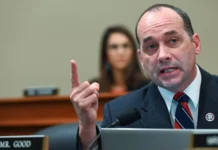
When Congress passes major legislation, it’s not unheard of for lawmakers to pick economic winners and losers. Some companies and industries will do well under the new law, while others will fare poorly. This often leads to adverse consequences for consumers, and, when products that affect our health and lives are involved, the results can be catastrophic. We’re seeing this with the Inflation Reduction Act (IRA) that was signed into law last year. The IRA has some positive aspects – like capping insulin out-of-pocket costs for Medicare beneficiaries at $35 – but the law also created some unintended consequences that will be quite damaging for Arizona patients, particularly those who are or will be suffering from serious health conditions.
I am the Founder and CEO of the Arizona Myeloma Network, a 501c3 cancer charity. We work with not only myeloma patients and families but all Cancer patients and caregivers because the whole family is affected. I also participate as an advocate with other patient groups across the state to support policies that protect access to care and promote the patient’s well-being. Finally, we help navigate a patient’s insurance issues, co-pay problems, as well as lack of provide access to quality resources. We do our best to encourage our Federal leaders to work together, and in this instance, we urge them to address some of the policies in the IRA that are harmful to patients. By choosing medical “winners” and “losers,” the law creates far-reaching consequences that will affect millions of Americans.
Under the IRA, prescription drugs in the Medicare program are going to be subject to government price-setting, but not all drugs are being treated equally. There are essentially two broad categories of drugs – small molecule and large molecule, the latter commonly known as biologics. Roughly 90% of all prescription drugs are small molecule in nature, ranging from aspirin to medicines to treat high cholesterol to chemotherapy drugs. The biologics, or large molecule drugs, are more time-consuming and expensive to develop and are used to treat complex conditions like autoimmune diseases and genetic disorders.
The IRA subjects both small and large-molecule drugs to government price controls. The difference is in the time period drugmakers have to recoup their research and development investment before those price controls kick in. For the large molecule drugs, it’s 13 years. The small molecule drugs have just nine years. Congress, in this case, clearly picked winners and losers, and there are painful consequences for doing so.
This inexplicable timing discrepancy will have a negative impact on innovation investment into small molecule drugs and therapies. It’s simple logic. Capital investors will direct their money toward the products that have four additional years free from federally-imposed price ceilings. Research dollars are not unlimited, and, through the IRA, politicians have decided where the lion’s share of them will go. The losers will be those patients who depend on small-molecule drugs.
In Arizona, more than four million people live with a chronic illness. These conditions need constant management to successfully control symptoms. Whether we are talking about diabetes, cancer, asthma, or depression, patients with these chronic diseases need effective medications, and they deserve innovation into new treatments and even cures. Price controls alone will make it more difficult to bring new breakthrough drugs to market. Selecting certain drugs, particularly those that affect so many patients with a wide range of health challenges, to be subject to a harsher impact from those price controls is unfair and often tragic.
An immediate step that Congress can take is to fix this flaw in the IRA and give small molecule drugs the same 13-year window as biologics before government price setting kicks in. Government shouldn’t be picking winners and losers among patients who have the same needs for high-quality health care. We need to be proactive in dealing with these flaws in our research and development system.
Arizona has been a leader in new clinical trials and access to care as well as new drugs for cancer. My husband was diagnosed with multiple myeloma in 1991, just before our marriage. We were told that there was only one drug available, and he had 1-3 years to live. It has been 32 years, and he is doing well, and we have been blessed to have had access to the new drugs and treatments that are now available. This would not have been possible if these IRA policies were in effect back then. Senators Kyrsten Sinema and Mark Kelly have been friends to the patient community. I hope they use their influence to advocate for us once again.
Barbara Kavanagh is Founder and CEO of the Arizona Myeloma Network, which is a statewide non-profit organization that provides resources and programs to cancer patients and their families. Their new educational platform is now available at cancercaregiversaz.com.
Republished with the permission of The Center Square.













